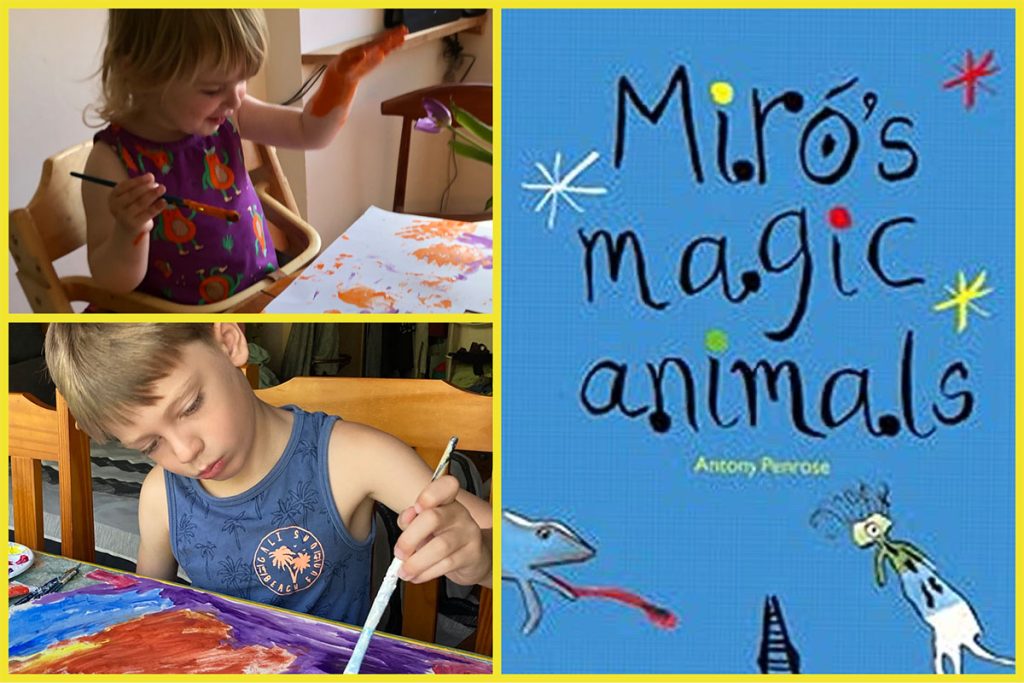
Antony Penrose
Thames & Hudson
Age 5-9 years
When he was a child many years ago in the middle of the 20th century, Antony Penrose met the famous Spanish artist Joan Miró. Antony’s mother was a well- known photographer and his father was an artist and they often had famous artists come to visit them.
This delightful book tells us about Antony’s meetings with the artist, including a visit to London zoo, but the book is also a playful introduction to Miró’s work. It is highly illustrated and carefully put together with photographs, reproductions of Miró’s works and illustrations by children.
The book is one of our Top books to inspire young artists

Share the story
Read Aloud
Read the book together slowly, taking time to the look at the photographs of Antony as a young child, at the photos of Miro and his paintings, and children’s illustrations.
The author asks questions as you read through the book and asks, for example, if you have noticed particular animals or whether you can imagine what various animals are thinking.
Listen to the book read aloud here https://youtu.be/SFawbf6Czs4?si=raWrZVHwgFPwuezm
Talk about the book
Ask your child/children what they have found out about the artist Miró from reading the book – where did he come from, what did he like to paint, what colours do you think he liked?
Ask your child/children to pick out a favourite painting (eg look at paintings on pages 7,8 &, 10, 14, 17, 21 and 26) – what things do they notice about the painting?
Animals are featured in most of the paintings – can you help your child/children to imagine what the donkey on page 10 might be thinking, or the cat on page 14, or the dog on page 15?
Miro enjoyed visiting London Zoo and made some fantastical drawings of the animals. Children have drawn their own animals for the book, using some of Miró’s ideas. Look through the children’s drawings and pick out favourites. Look at the beginning and end papers to see many of the children’s drawings.

Things to make and do
Be an Artist
Choose one or more animals either from your imagination or from the book and see if you can use Miro’s lines and curly marks to draw and paint your animal, making it look as magical as Miró’s.
Make a collage
Miró loved strong colours such as bright blue, yellow and red. You might like to use one of these colours to paint a background then let it dry before cutting out the animals you have drawn and sticking them on to the background to make a collage.
You could design a poster about Miró such as the ones on page 43 to persuade people to come to an exhibition of Miró’s work – you will need to give the exhibition a title and you could illustrate the poster using your own animals.
Be a writer
Write a letter to Miro. First of all you could make a list of questions would you like to ask him about his life and his paintings. You could tell him what you liked about his paintings.
Look carefully at the picture on page 14 The Dog Barking at the Moon. Can you write a speech bubble or short caption for the picture to say what you think the dog might be thinking.
Write a list poem with your child, or with your class. Look at the painting by Miró called Birds and insects on page 26 and think of individual words to make a list poem, writing one word on each line, for example:
Miro’s Birds and Insects
Blue
Smiles
Wings….
Find out more

 Follow lovemybooksUK15
Follow lovemybooksUK15